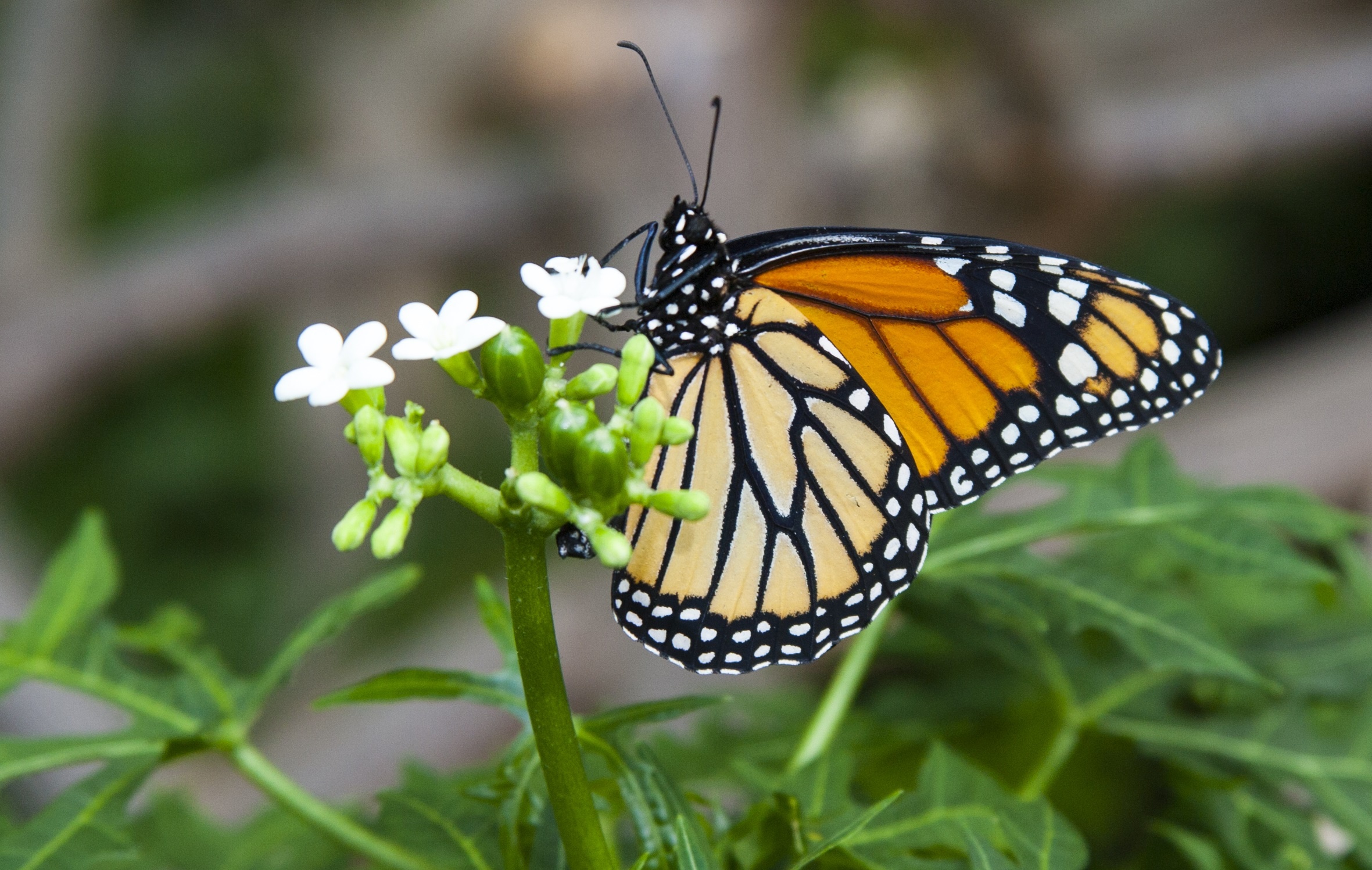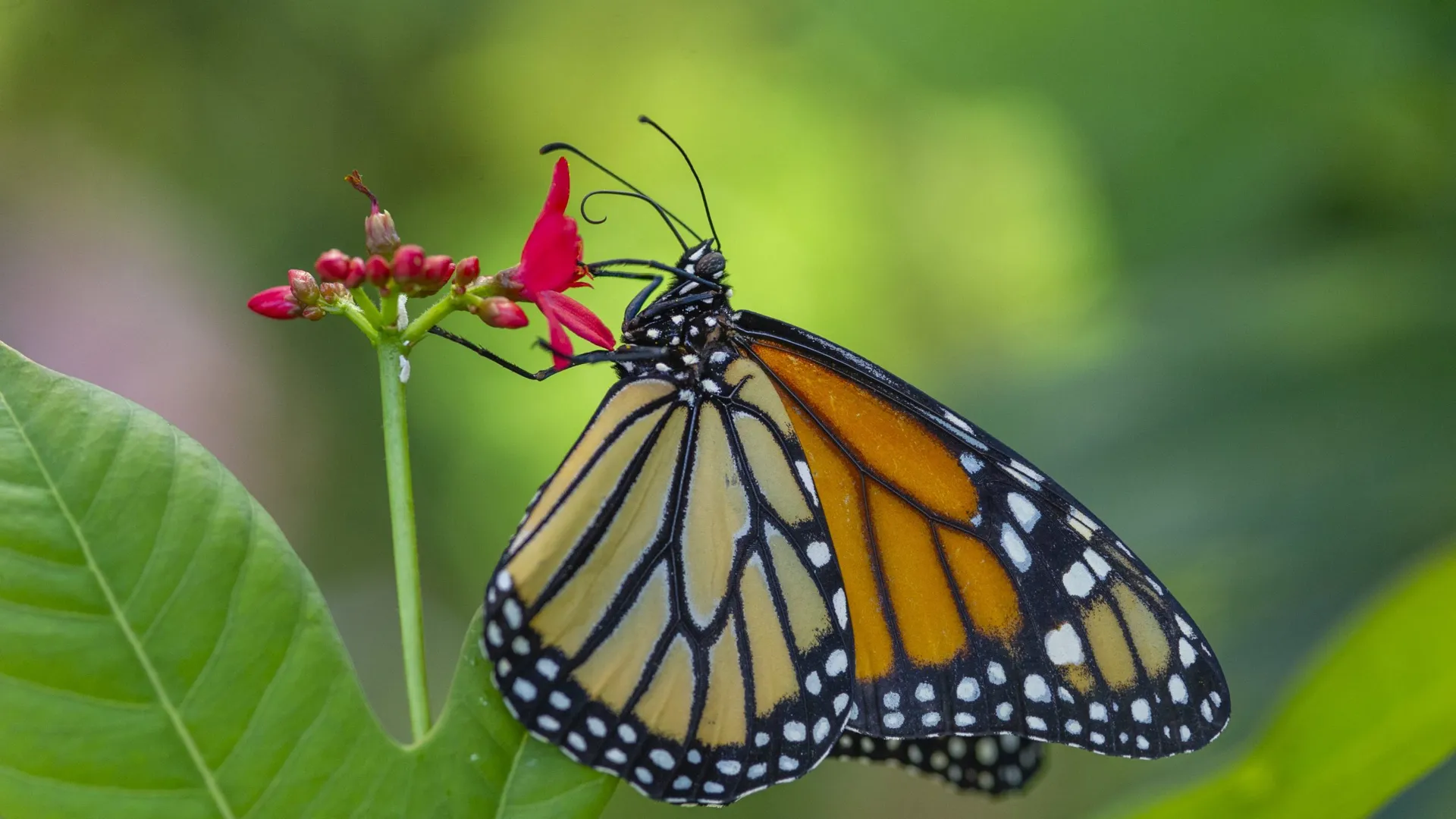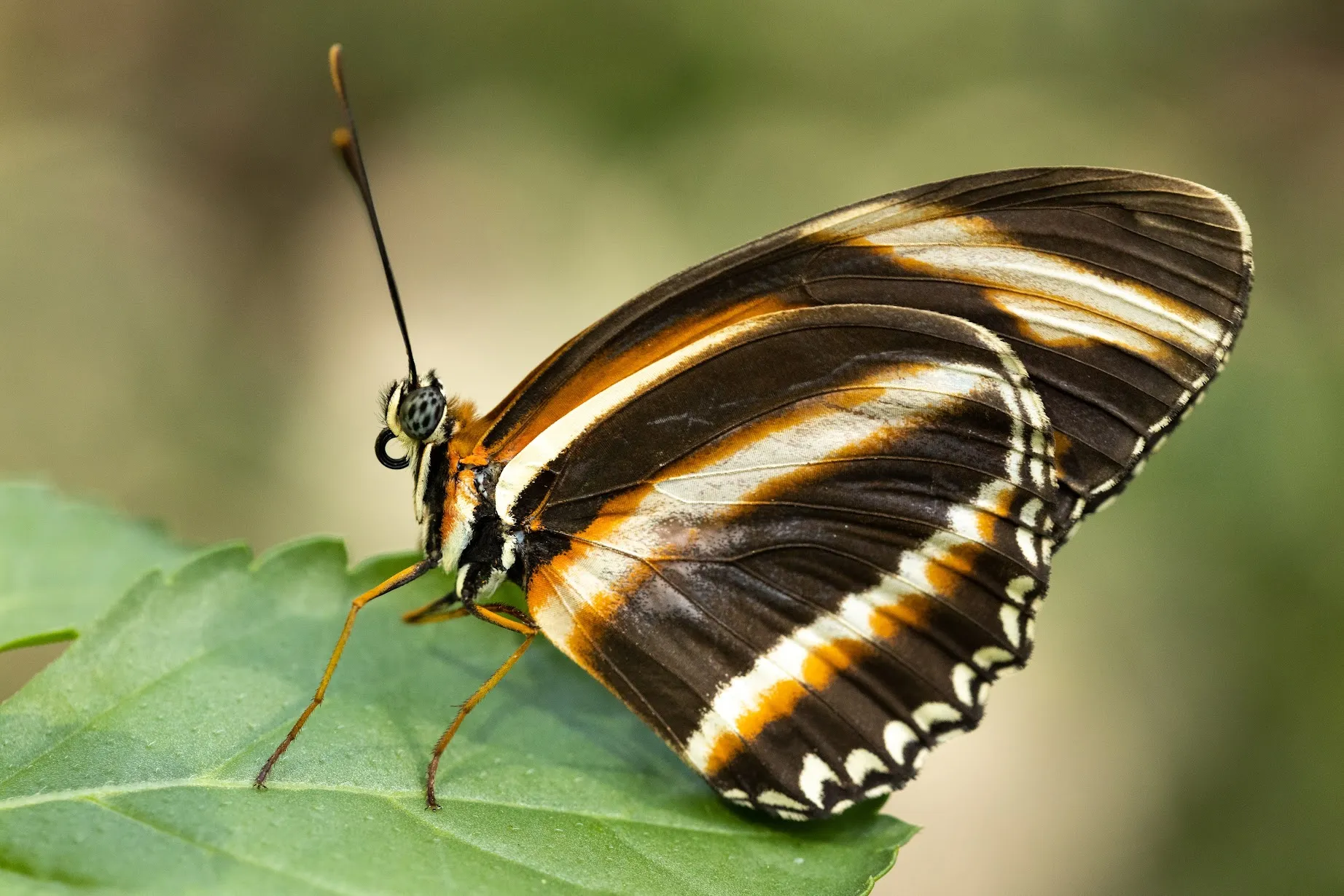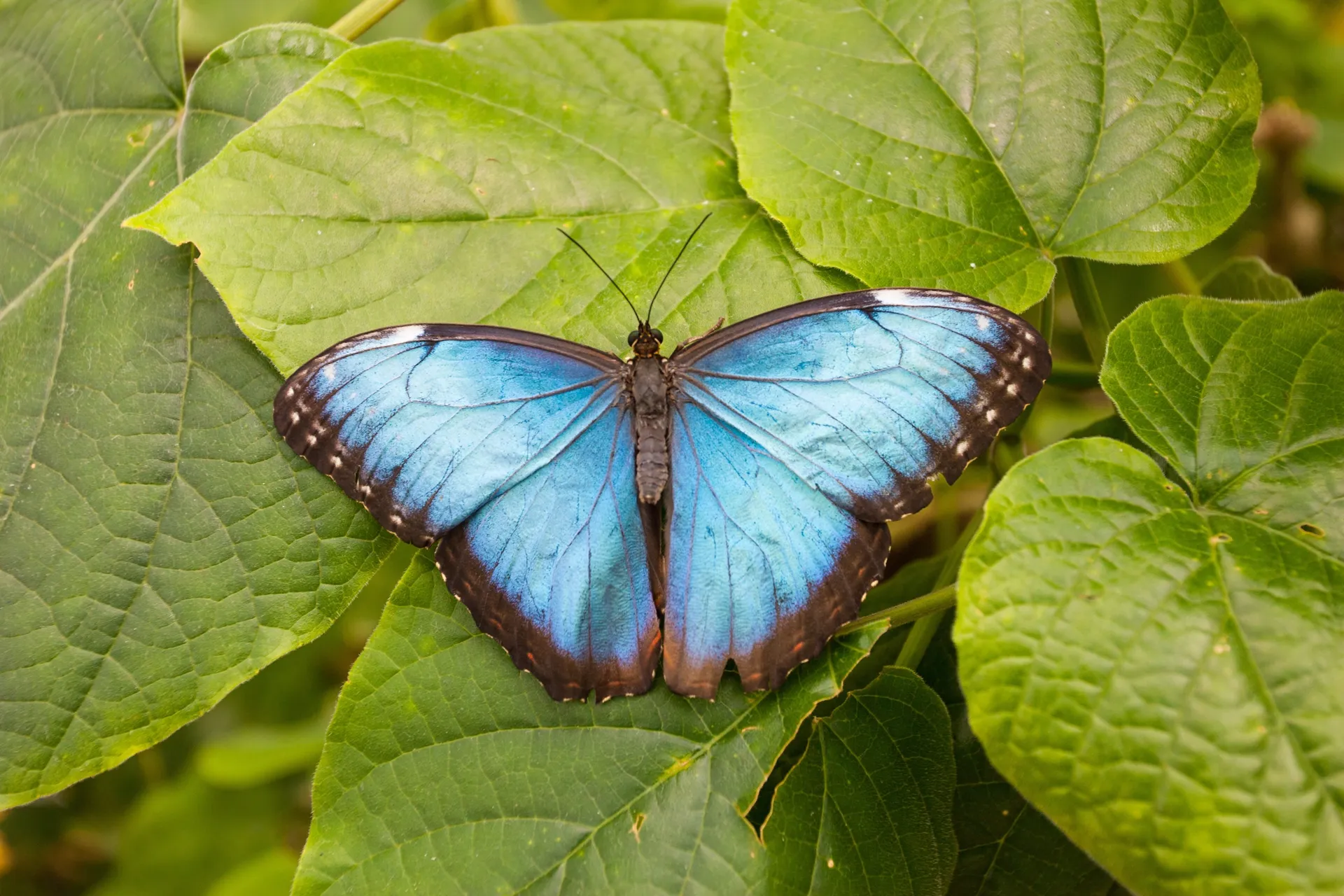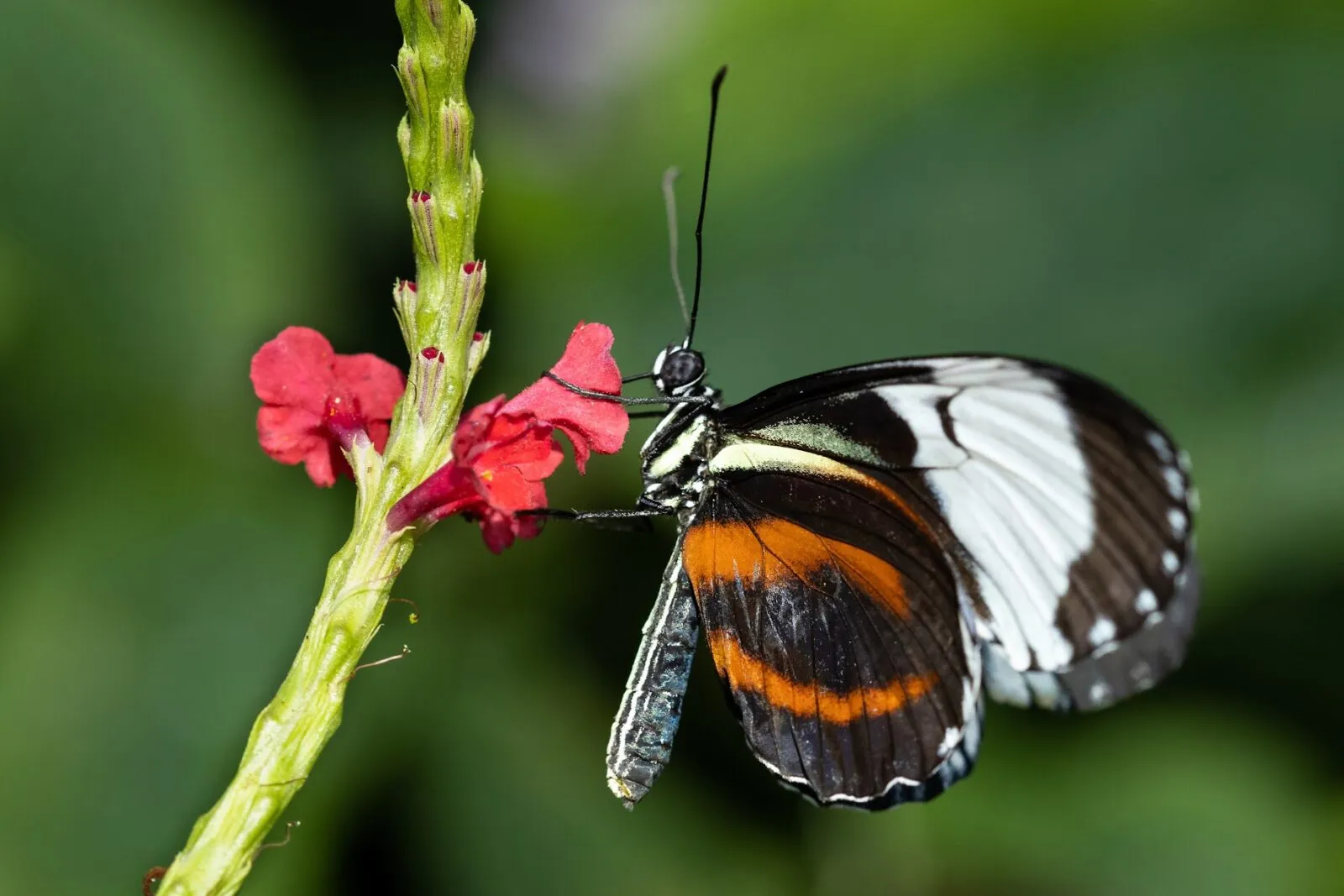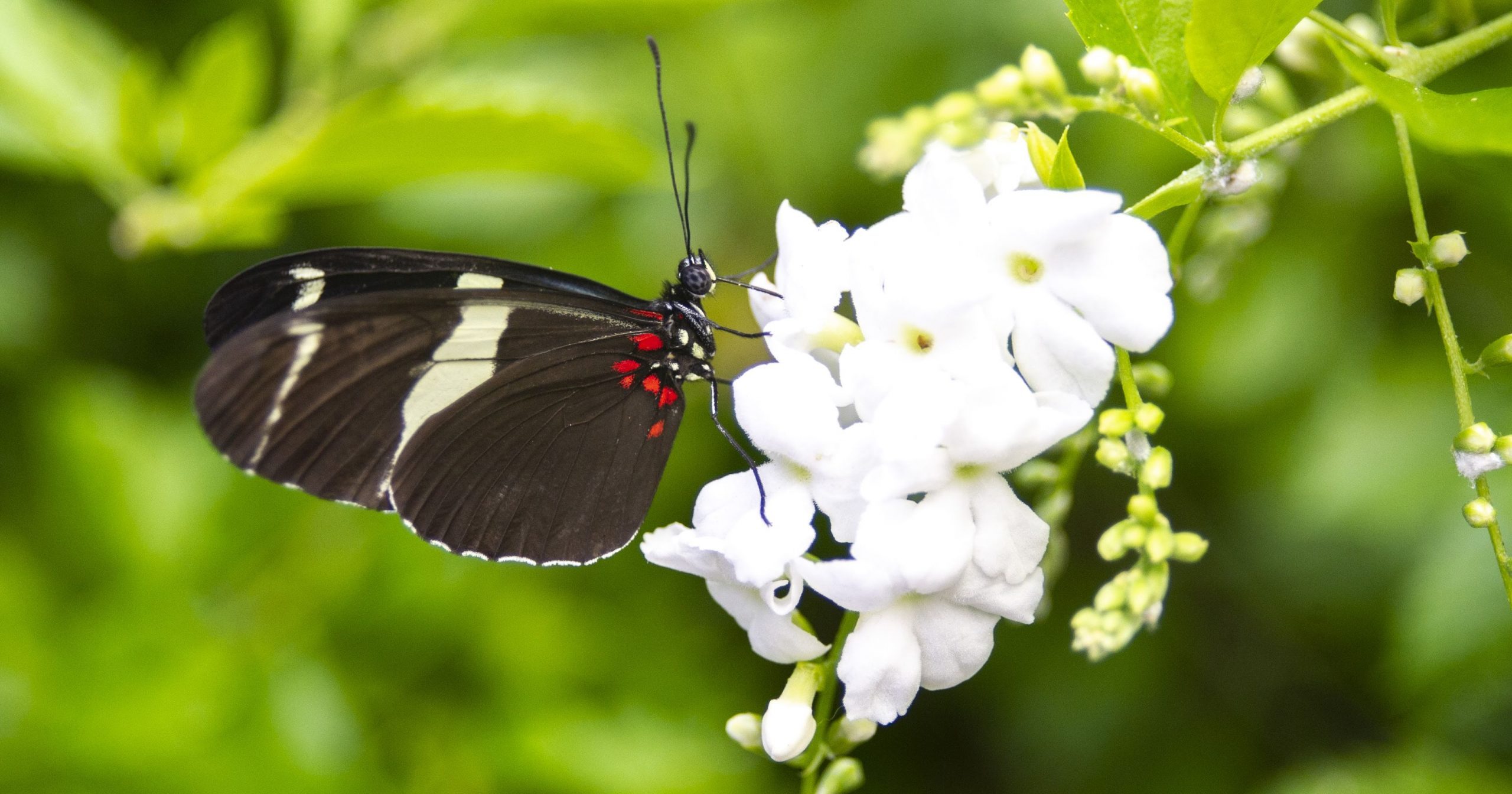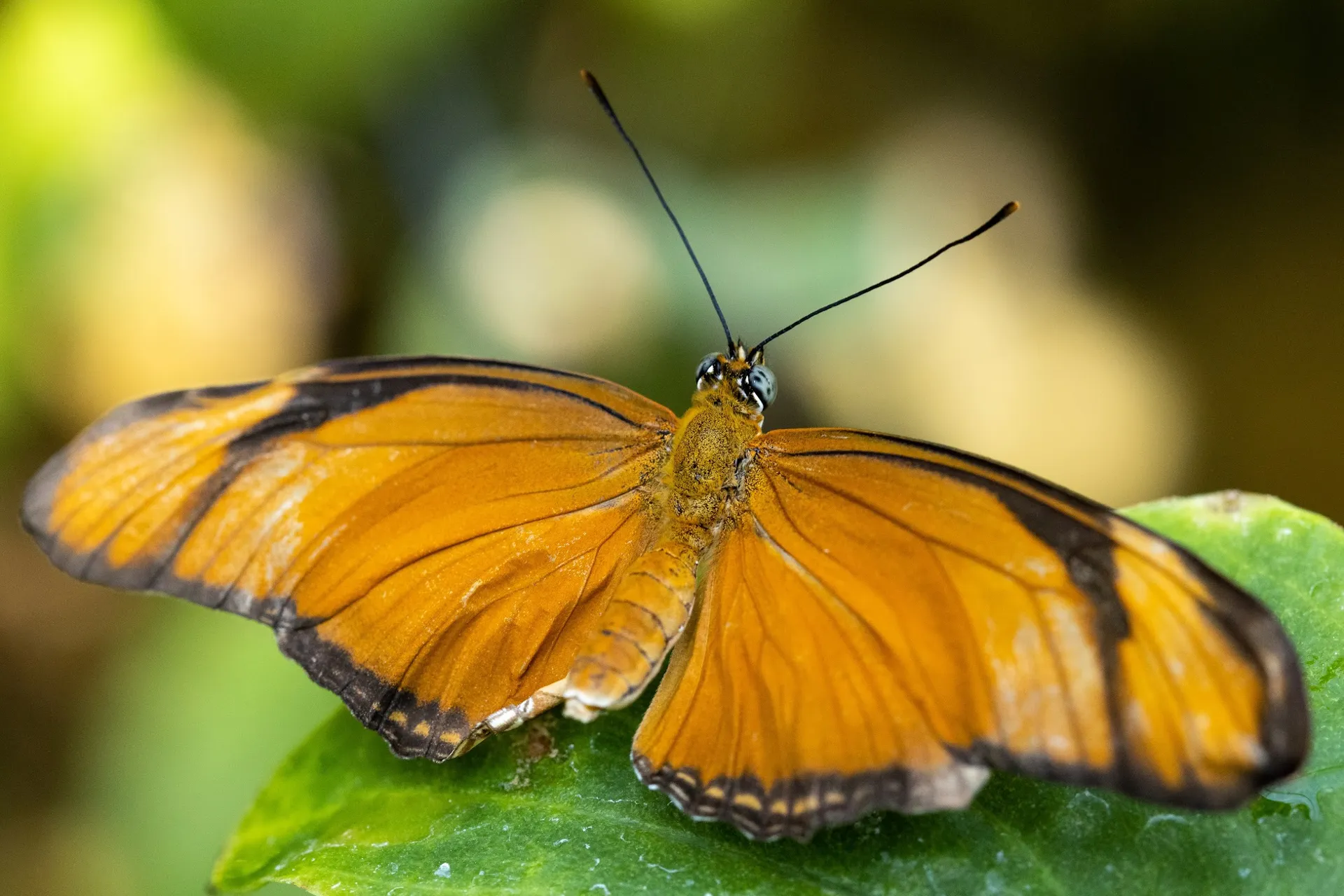On Exhibit
Butterfly Garden
The monarch butterfly is sometimes called the "milkweed butterfly" because its larvae eat the plant. Adult female monarchs lay their eggs on the underside of milkweed leaves. These eggs hatch, depending on temperature, in three to twelve days. In either the caterpillar or butterfly stage the monarch needs no camouflage because it takes in toxins from the milkweed and is poisonous to predators.
Each fall as many as 100 million monarch butterflies migrate from the northern parts of North America to California and Mexico. Monarch butterflies are not an endangered species, but threats such as habitat loss are an important concern.
More on the Monarch
